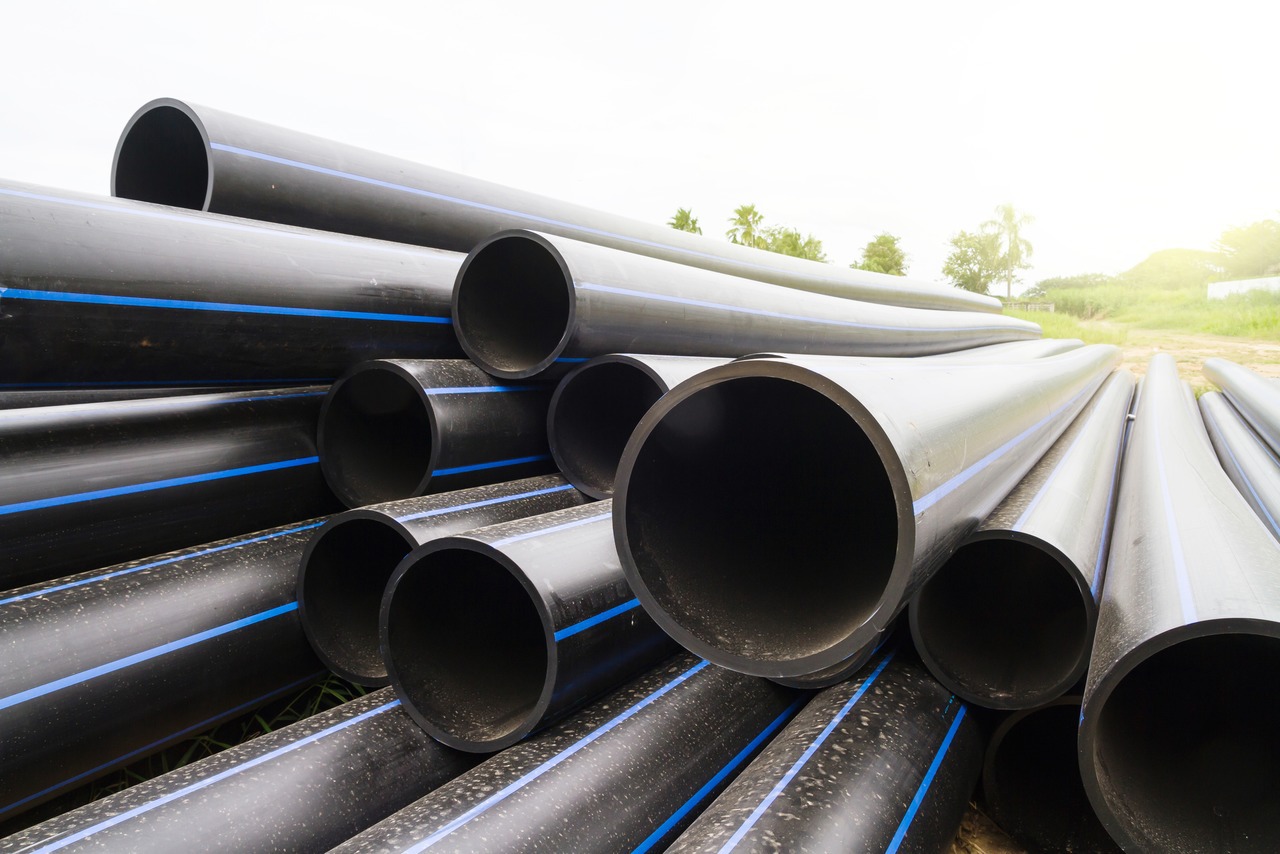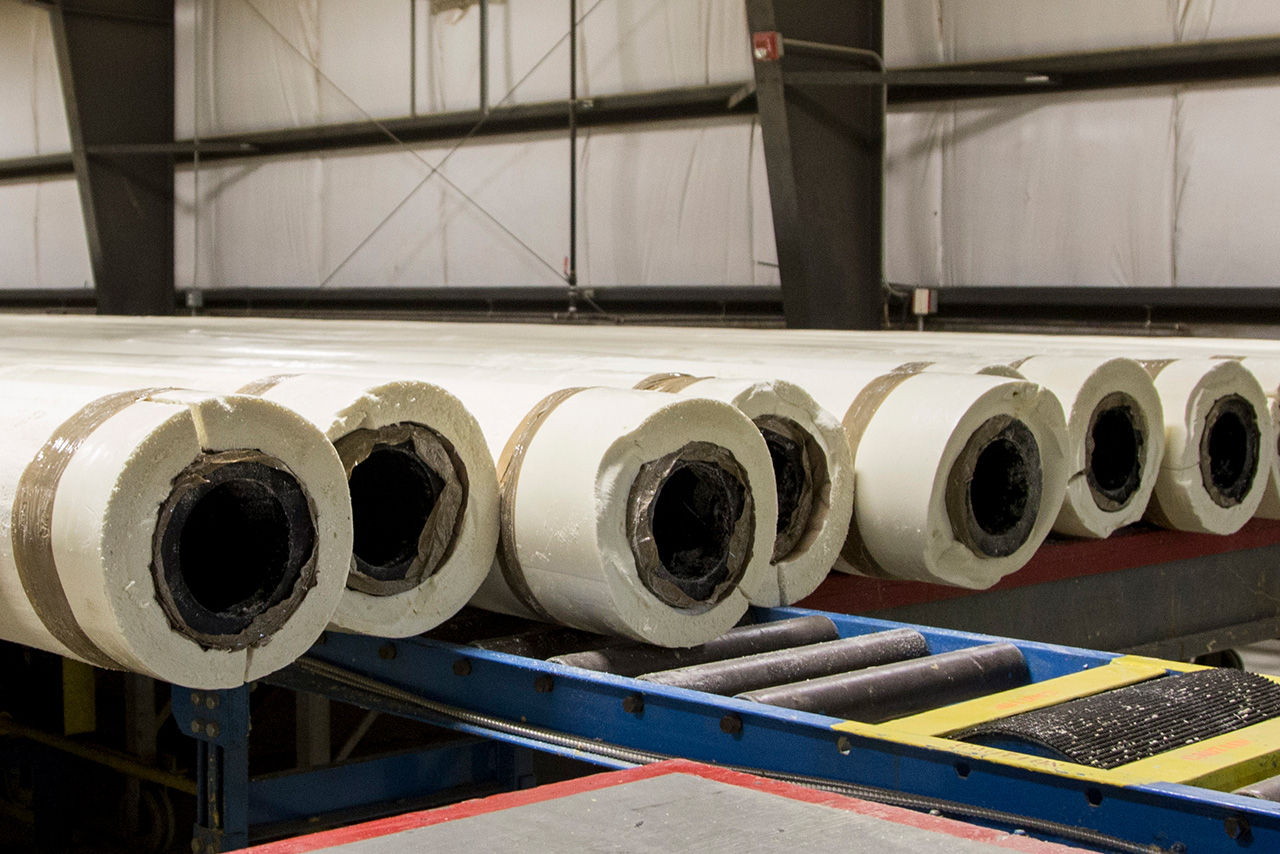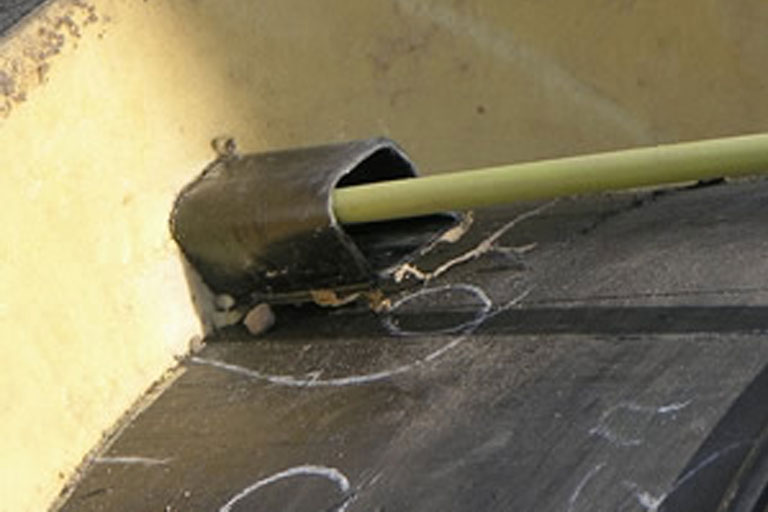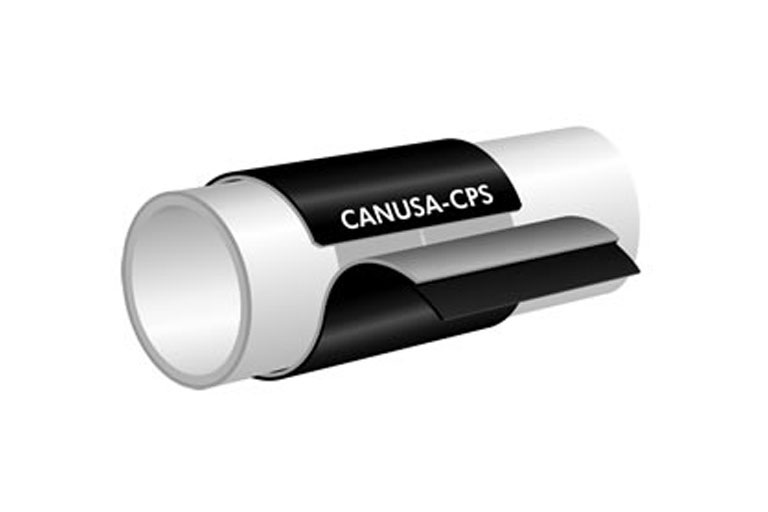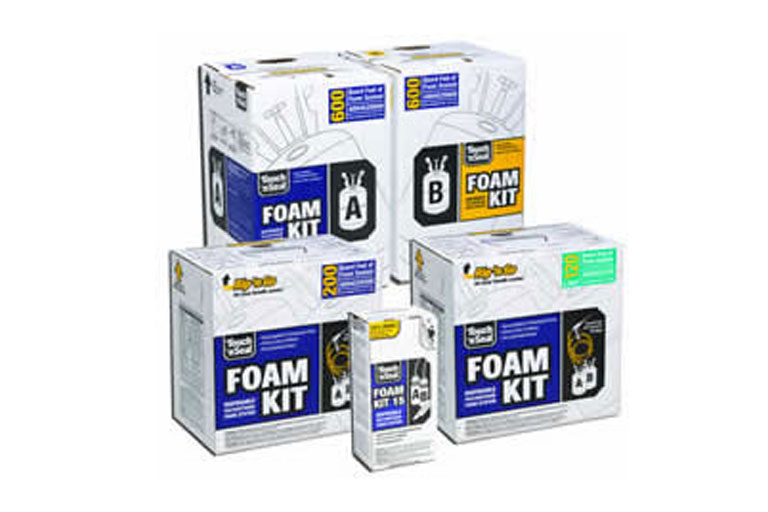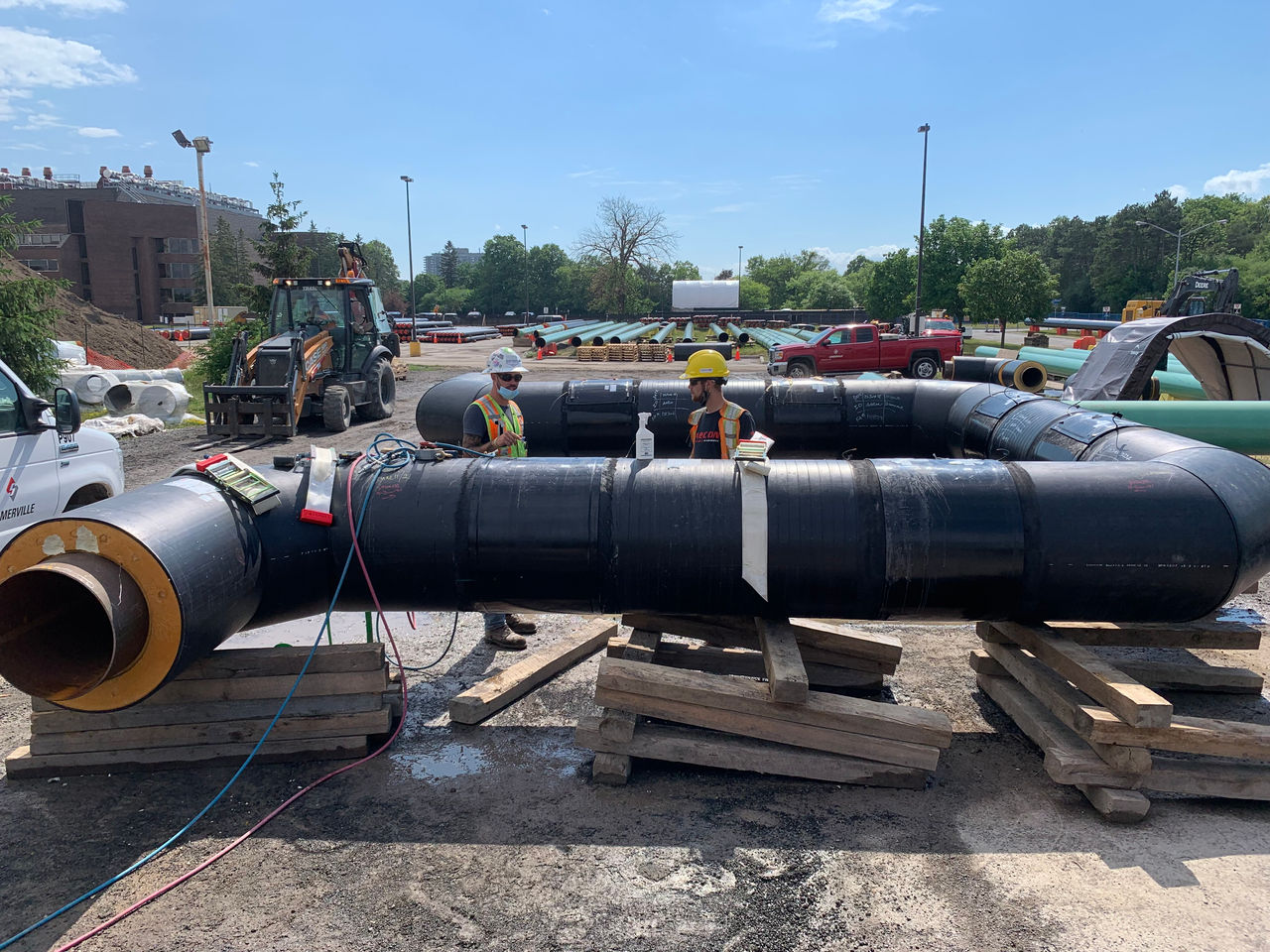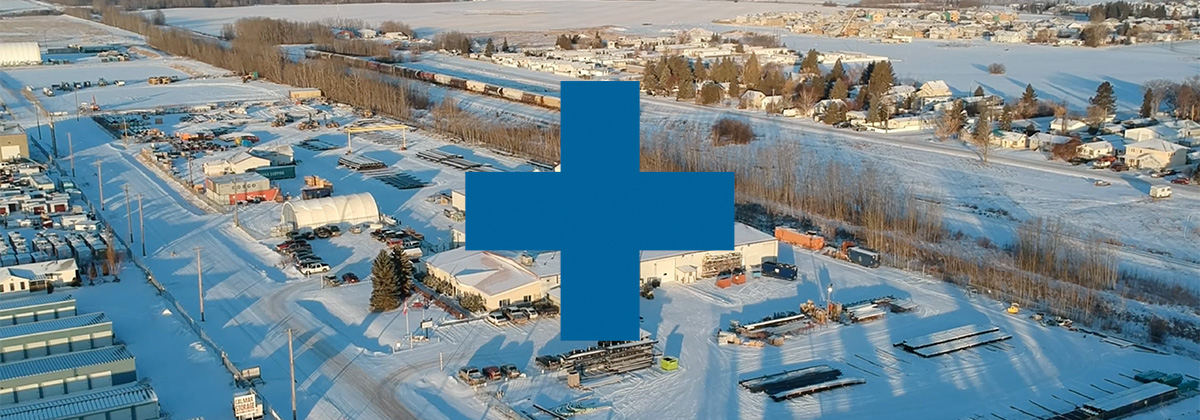Please accept all cookies to view the external content.
What is pre-insulated or factory insulated pipe and how does it differ from conventional pipe insulation?
GF Urecon pipe is pre-insulated in our factory … i.e. polyurethane foam is extruded around the pipe with or without integral heat trace channel(s); followed by factory application of an appropriate outer jacket to best suit the application. The foam reaction mixture adheres directly entire to the core pipe and outer jacket surfaces resulting a ‘bonded’ composite. With our system, the pipe arrives on the job site ready to install.
Conventional pipe insulation is applied ‘on-site’ once the pipe has been installed – frequently using materials which can be inferior to factory applied polyurethane foam. Plus, field labour can be expensive and unpredictable.
Advantages with the GF Urecon U.I.P.® polyurethane insulation include: void free insulation; superior thermal performance; high compressive properties; moisture resistance; ability to heat trace through channels; flexibility.
What kinds of pipe can be factory insulated?
Any and all kinds … HDPE, PVC, CPVC, steel, copper, ductile iron, FRP, PEX etc.
Will pre-insulated pipe alone keep my pipes from freezing?
Not necessarily. Even fluid in a pre-insulated pipe can and will freeze in a prolonged NO FLOW situation. Factory applied polyurethane foam will slow down heat loss considerably, but if flow does not resume, the fluid will eventually freeze. The most common way to prevent freezing altogether is to add electric heat tracing. Using a thermostatic controller, the tracing complements the insulation by coming on only when heat is required.
How do I decide if my pre-insulated pipe system requires heat tracing?
GF Urecon uses computer assisted engineering software to calculate heat loss and accurate time-to-freeze predictions based on the specific variables of the job. This report provides enough information to make an informed decision on whether or heat tracing is required. Contact us for a detailed calculation.
What is the smallest/largest diameter pipe that can be factory insulated?
Urecon can factory insulate pipe diameters from 13 mm (½ in) to 1200 mm (48 in).
Does Urecon make the pipe too?
We don’t manufacture the pipe. The carrier pipe is supplied by others and we factory apply a layer of urethane foam and jacket to it.
Who supplies the carrier pipe?
For projects in Canada, the pipe is supplied by the distributor. For projects in the U.S., the Caribbean and Latin America, Urecon supplies the entire package as a matter of convenience.
What lengths does pre-insulated pipe come in?
GF Urecon supplies industry standard pipe lengths. i.e. single or double random for steel and FRP pipe; 12.19 m (40 ft) and 15.24 m (50 ft) for HDPE; 3.66 m (12 ft), 6.7 m (22 ft) or 10 m (33 ft) for copper; 5.5 m (18 ft) for DIP; 4 m (13 ft) or 6.1 m (20 ft) for PVC/CPVC.
What is the coldest temperature pre-insulated pipe can perform at?
For the last 40 years, GF Urecon has been supplying pre-insulated pipe systems for freeze protection throughout the far north, Alaska and the Arctic Circle where piping systems are designed down to -50°C (-59°F).
For shallow bury - is the U.I.P.® method of insulating superior to the old method of using “SM board” insulation?
Yes, for many reasons. Frost has a tendency to ‘sneak around’ the slab insulation making it less dependable. The rigid board approach, whether in an ‘inverted U’ or ‘box’ is extremely labour intensive and requires close field supervision to ensure structural soundness. Heat tracing is also not possible with this method.
In contrast, U.I.P.® pre-insulated pipe is an engineered solution to freeze prevention that is predictable in its behavior making it the preferred method. Pre-insulated pipe is the accepted standard of protecting against freezing in challenging conditions according to the MOE-Design Guidelines for Drinking Water Systems-2008* (government of Ontario)
Does shallow bury GF Urecon pre-insulated pipe meet H-20 loading?
GF Urecon’s standard polyethylene jacket is suitable for H-20 highway loading at 600 mm (24 in).
Is pre-insulated pipe more expensive then conventional ‘field applied’ ‘inverted U’ or ‘box’ methods?
In many cases, the least expensive option is pre-insulated pipe over rigid board, when field labour and supervision costs are taken into consideration.
What thickness of urethane foam should be used on factory insulated pipe?
The standard is 50 mm (2 in) thick but this can vary depending on application and pipe diameter.
There are a range of outer jacket materials and thicknesses available – how do I determine what best suits my needs?
This is a function of scope of job and application. Generally, the Urecon standard polyethylene jacket is used for buried applications; PE Casing is used for above ground (laid on grade) or high temperature applications; Spiwrap jacket is for above ground (bridge crossings) or industrial applications; PVC Jacketing is used for below or above grade warm/chilled water; or cryogenic applications.
Heat Tacing
Should the trace channel(s) be placed at the top or bottom of the pipe?
When using GF Urecon factory insulated pipe with constant wattage heat cable, the orientation of the heat trace channels play no role in how the system performs. The high insulation value of polyurethane foam is such that there is virtually no variance in temperature from the bottom of the pipe to the top. As long as the heat generated by the Thermocable is under the insulation and along the pipe wall (and it is by nature of our system), this thermal energy will sufficiently warm the entire pipe regardless of channel orientation.
Specific channel orientation is most commonly used from a practical perspective for "ease of access" ... that is, bottom position on a pipe being installed from below on an overhead pipe rack OR on the top position when large OD pipe is installed in a shallow trench.
There are, however, two cases where positioning would be of a concern:
- on an empty or partially empty pipe opened to atmosphere and allowing the generated heat to escape. In this case, the heating cable should be on the bottom (6 o’clock position) so that the heat generated goes to the liquid first then to atmosphere.
- when self-regulating cable is used. The power output on this type of cable has to be greatly de-rated when in a channel and the de-rating factor varies from top (cable sitting against the pipe wall) to bottom (cable sitting against the insulation and away from the pipe wall).
What is the maximum distance of pipe that can be electrically heat traced from one power feed location?
A series type cable has a constant power output throughout its length and may be used to trace pre-insulated pipes to 3659 m (12000 ft) or more in length from one power supply point. This is a lightweight product, easy to pull into heat trace channels and provides proven long term performance and reliability.
Our ‘off-the-shelf’ Thermocable has a maximum circuit length of 140 m (450 ft) at 120V; 245 m (800 ft) at 240V and 425 m (1400 ft) at 575V.
Can heat tracing be used to thaw a frozen line?
Should a line freeze for whatever reason, there are limited options available to thaw it out. In many cases, design engineers build in passive THERMOCABLE® electric tracing. In this case, the tracer is not normally energized and is switched on only in case of freezing to thaw the service line. Thermostatic control must be provided in case the operator forgets to turn off the tracer once the line is thawed. If passive tracing is installed, consideration should be given to a 13 Watt (4 w/ft) per meter capacity THERMOCABLE® to provide extra wattage to thaw out the service pipe.
If the service pipe is type K soft copper, a “welding machine” should NOT be used to thaw out the service pipe. This method poses a serious fire hazard to the building and those surrounding and is prohibited in most jurisdictions.
Another recommended method is the use of a pulse jet de-icer; this self-contained unit has a nylon probe that injects high pressure pulsating hot water down the copper or plastic service pipe. The combination of pulsating hot water and high pressure thaws most lines safely. Units are commercially available that can thaw up to 60 m (200 ft) of service line.
Kingspan LOGSTOR PEX-FLEX
What makes your PEX-FLEX different than other insulated pipe systems?
PEX-FLEX has a number of unique features. Most notably, it is a bonded system. The PEX carrier pipe is bonded to the PUR foam due to the EVAL coating, the Polyurethane (PUR) foam is bonded to the Low Density Polyethylene (LDPE) casing by means of a polymer Diffusion Barrier. This bonded system absorbs expansion and contraction and eliminates the ingress and travel of water should there be damage to the pipe. Another important difference with PEX-FLEX is the Diffusion Barrier, or Smart membrane. This polymer is engineered to prevent diffusion of cell gases through the casing. Thus the pipes retain the same high insulation properties throughout the entire service life. Our competitors cannot make the same claim.
What sizes of carrier pipe are available?
PEX-FLEX is available with a single PEX carrier pipe in nominal sizes of ½” (20mm) up to 4” (110mm).
DUAL PEX-FLEX is available with 2 PEX carrier pipes per single casing in nominal sizes of 2 x ½” (20mm) up to 2 x 1 ½” (50mm).
Is PEX-FLEX very flexible?
Flexible is a relative term. Our pipe is flexible enough to be coiled and easily transported. Uncoiling our pipe takes some work. Once installed the “bulletproof” system lasts well over 30 years.
What lengths does PEX-FLEX pipe come in?
PEX-FLEX pipe comes in full coils of 328 ft. (100m). Dual 1” (32mmx32mm) comes in coils of 567’ (173m). “Double length” rolls are available, on special order, in certain dimensions; for example, Dual 1” (32mmx32mm). All coils are available “cut to length” for specific projects and applications.
What if my installation is longer than 1 coil of pipe, say 375 feet?
We would offer a full 328' coil and a 47' piece cut to length. You then require a pex to pex coupler and insulation kit to make the system watertight.
How do I transition from plastic to metal piping system? Do I need fittings?
At this time all PEX pipe needs a mechanical fitting to transition to other types of pipe. You will need to “come-off” the PEX tubing at some point. Therefore you will need an adapter make the transition. A PEX to NPT Male thread adapter will allow the transition from the plastic PEX to other plumbing fittings and pipe.
Dimension of the coils and weights
The Coils of PEX-FLEX are produced to be transported in an ocean going container. All coils are 8’ across to a maximum of 8’ high. The weight of the coil depends of pipe diameter and length. Coil Weights range from 50kg (110lbs) – 570kg (1200 lbs).
Your website states that: “All sizes are metric, neither IPS nor CTS sizes; imperial adapters are supplied as required”. Why do you use Metric sized pipe?
PEX-FLEX is produced in Europe under European standards for pipe sizing, Diametre Nomimal or DIN. This standard uses metric measure.
The North American Nominal Pipe size (NPS) system works the same way, the unit of measure is Imperial. Whether the pipe is NPS or DN it is reporting the “approximate” outside diameter of the pipe. Pipe wall thickness varies by manufacturer and thus the Inside diameter of the pipe varies.
Can I use PEX-FLEX for my household water?
Yes - PEX-FLEX carrier pipe is pex-A and is NSF stamped for potable (drinking and household) water.
Are expansion loops required OR how does one accommodate for expansion/contraction?
Expansion loops are NOT required. Due to the properties of the PEX carrier pipe Expansion/contraction need not be a consideration.
Any special backfill?
No. Simply backfill with the soil removed during trenching. It is recommended that the material not contain organic material, nor sharp edged grains which could damage the pipe and joints over time.
Hot Water District Heating
What does “European Standard” mean?
Kingspan LOGSTOR produces bonded hot water district heating pipe systems to strict European (EN standards) which guarantee the highest level of quality at every step of the production process.
There are five standards:
EN 253: Pre-insulated bonded pipe for hot water district heating
EN 448: Pre-insulated fittings
EN 488: Pre-insulated valves
EN 489: Joint kits
EN 13941: Design and installation
The standards test all aspects of the individual components (insulation cell structure/water absorption/ compression resistance) plus ensure compliance of the finished system to five rigorous tests: axial and tangential shear strength, aged shear strength, creep and impact resistance. These tests better predict overall long term behavior of the system under sustained high temperature. Precise knowledge of the physical characteristics of the system leads to more precise stress calculations.
Additional features of an EN standard pipe system:
Thin wall steel pipe (schedule 10 to 20) allows for 4 different laying methods eliminating U-loops and keeping the pipe layout in straight lines thus reducing installation time/costs.
Direct buried valves, eliminating expensive man-holes.
Joint kits complying to strict standards resulting in a completely dry environment when exposed to underground water and pipe thermal expansion.
Reliable leak detection of entire system – even fittings.
One-stop shopping for all components – including valves … all compliant to the same strict standards.
Why choose Kingspan LOGSTOR EN hot water piping over conventional North American products?
Predictable quality due to attention to every detail required by the EN standards with Kingspan LOGSTOR hot water district heating pipe. In North America, there are separate standards for the steel pipe, polyurethane foam and HDPE casing. Although tests are often carried out on these individual components, there are no requirements for compliance of the entire system.
Experience with hot water district energy systems is far greater in Europe – especially Denmark.
Kingspan LOGSTOR piping comes with a 5 year warranty (traditional North American warranties are generally 1 year).
Local technical support – from design to installation.
Professional local technical support – from design to installation.
Peace of mind.
GF Urecon also produces hot water insulated piping (UIP Hi-Temp) – when should this be used over the Kingspan LOGSTOR EN system?
Kingspan LOGSTOR EN 253 is generally used on new (or expanding) district energy projects where the systems are designed around the European concept. These can be large urban centres to small biomass communities. There are numerous benefits to the EN approach (see above). The Urecon Hi-Temp system is typically used in existing DE networks where the entire system is built around a North American design. The product is often replacement pipe – often found at airports, prisons and on university campus systems.
EN hot water or STEAM? What’s the difference?
Beyond the obvious safety factors, hot water is a far simpler system to design, install and maintain. Plus, hot water is a far more efficient medium ... less heat loss over longer distances.
There are also many practical reasons why EN hot water district heating in preferred over traditional steam piping:
- NO vaults or manholes (Kingspan LOGSTOR valves are pre-insulated and direct buried)
- NO anchors -Fewer on
- NO U-loops (thin wall steel pipe = less stress) ... numerous laying methods including in-line trench using compensators
- NO traps or pumps
- NO requirement to lay pipe at angles to feed steam traps
- NO aggressive condensate return (prone to failure over time) to pump back
- LESS fuel to produce hot water relative to steam
- LESS heat loss over distance
- Lower overall installation cost (far fewer welds)
- Less maintenance of system
- Uncomplicated and simple pipe system (straight steel-foam-jacket versus class A
Can EN hot water piping be used to replace older underground steam networks?
Absolutely. See details of the UofR case here
What about sterilization requirements at hospitals – don’t they need steam?
In the case of hospital heating, electric boilers for local steam production for sterilization are used ... as this is most often a very small percentage of total load.
Pre-Insulated System Components
Customer Reference Cases
About GF Urecon

Timeline
Urecon Ltd was founded in 1969 as a privately owned business with state-of-the-art production sites in Coteau-du-Lac, Quebec, and Calmar, Alberta, with a strong market position and focus on pre-insulated piping systems for freeze protection, chilled water and district heating markets.
In late 2009, our Calmar Alberta facility began producing with a new state-of-the-art PE jacket extruder. This highly automated line allows greater overall capacity and flexibility up to 1200 mm (48 in) diameter core pipe.
GF Industry and Infrastructure Flow Solutions acquired Urecon on July 18th, 2017.
GF Urecon's U.I.P.® processed pipe
GF Urecon's U.I.P.® processed pipe is insulated with rigid polyurethane foam, the best insulation commercially available on the market today. With this system, the pipe is pre-insulated at GF Urecon and arrives on the job site ready to install.
GF Urecon's patented insulation process ensures a homogenous, void free layer of rigid polyurethane foam insulation, bonded directly to the entire pipe surface. Our insulation system may be applied to virtually any type of core pipe on the market today, from 13 mm (½ in) to 1200 mm (48 in) in diameter, with or without electric tracing conduit.
Millions of meters of Urecon pre-insulated pipe have been installed for both freeze prevention (often with our THERMOCABLE® electric tracing system) in cold climates; centrally chilled water piping systems in temperate and tropical climates; and hot water / low pressure steam piping for process and district energy.
With the proper outer protective jacket, our pipes may be installed either buried or above ground. In any extreme climate, Urecon pre-insulated pipe is the system of choice.
EN253 Distributor
GF Urecon proudly distributes Kingspan LOGSTOR EN253 (European standard) hot water district heating pipe products throughout North America. Headquartered in Denmark, Kingspan LOGSTOR is the world’s pre-eminent producer of pre-insulated pipe systems employing over 1400 people in 9 production facilities. Kingspan LOGSTOR also produce a unique line of flexible pipe systems called PEX-Flex.


